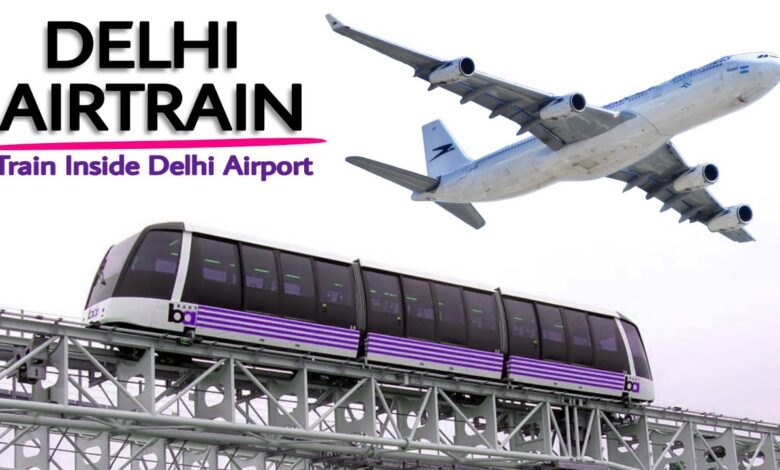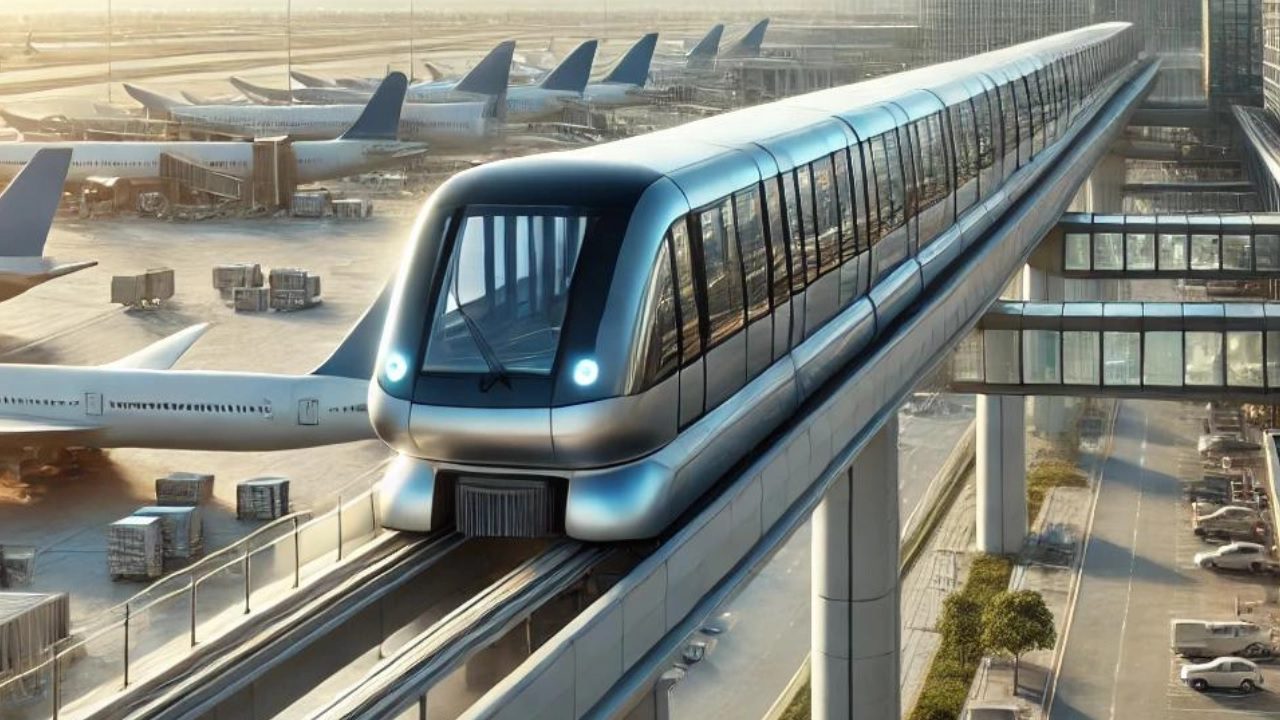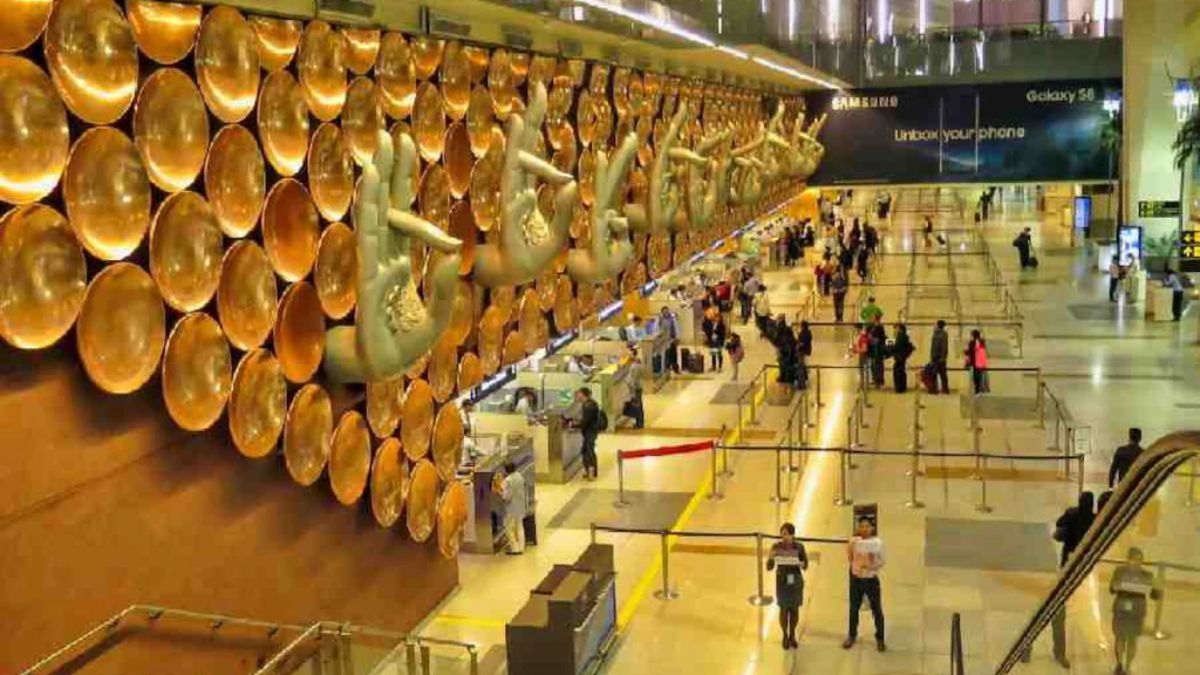Delhi’s IGI Airport will introduce India’s first air train by 2027, linking Terminals 1, 2, and 3. Can It Truly Reduce Carbon Emissions And Enhance Passenger Comfort?
Delhi’s Indira Gandhi International Airport (IGIA) is making headlines with the first air train or Automated People Mover (APM) to dramatically transform passenger transport between terminals across India and beyond. The 7.7 km line is connecting the airport terminals –T1, T2 and T3 and will avoid long walk ways thus enhancing passengers comfort and improving transit time. Besides providing convenience, the air train will be of supplementary benefit to the environment as an effort to carve a green city different from the traditional environmental degradation associated with air transport.

India is ready to witness a significant shift in the way of passenger transportation between airport terminals with the introduction of its first air train- an Automated People Mover (APM)- scheduled for launch at Delhi’s Indira Gandhi International Airport (IGIA). This 7.7 km route shall connect the airport’s T1, T2, and T3 terminals. The air train will help to easily facilitate passengers’ smooth, fast, and more comfortable movement from one terminal to the other. Other than comfort, carbon emissions will be reduced with this project, and flying will become greener.
The Air Train Project What is the AirTrain Project?
The air train project at IGIA happens to be an Automated People Mover, an extremely advanced transport system. An Automated People Mover is a small train designed to carry people over relatively short distances in towns. It is typically designed for use at airports or large places, such as theme parks. It doesn’t require a driver since it’s automated. The distance the air train will cover in Delhi airport will be 7.7 kilometres, with stops at four significant places.
- T1: This term is reserved for domestic flights, mainly on the part of low-cost carriers that include IndiGo, SpiceJet, and GoAir.
- T2/T3: These are being used by international and domestic flights. T3 is entirely international, while T2 is primarily used for domestic purposes.
- Aerocity: It is an area near the airport inhabited by hotels, office buildings, and businesses that offer services to the passengers.
- Cargo City: The hub of goods and cargo handling operations.
Currently, any passenger who wishes to move from one terminal to another must use shuttle buses. This can be tiring, more so at peak periods. The air train will transform this totally by offering an alternative channel for more rapid movement between terminals. The APM will greatly benefit transit passengers. Transit passengers arrive at one terminal and have to catch another flight from a different terminal. In today’s scenario, these passengers get delayed as the shuttle bus systems are not time-efficient.
Why is this project necessary?
The world has regarded Delhi Airport as one of the busiest airports. In 2023, more than 70 million travellers passed through its gates; by 2030, this number is expected to double nearly. So, when passenger numbers are increasing daily, it has become essential for rapid and better transportation between terminals.
A considerable number of flyers that land at IGIA are transit flyers. This means people who do not come from Delhi but are connecting from another flight at that airport. For instance, a man may come in from New York and go into Delhi with a layover to take an onward flight to Mumbai.
When they reach T3 and the flight to Mumbai is from T1, the individual will have to rush over to transfer between the terminals. The shuttle bus process, as of today, does nothing but increase the stress in passengers’ minds, especially when the connections are tight. The air train would solve the issue because it would offer them a much faster and more comfortable option to shift between the terminals.
While it’s convenient, it’s also a part of an overall plan to modernise India’s airports. Prosperity is growing in India’s economy, and India has more flyers. The air train will upgrade the experience of the passengers at IGIA to that of a world-class airport.
Project Overview and Timeline

The ground on which Delhi Airport is being run and managed is owned by the company named Delhi International Airport Limited or DIAL. With the support of its parent group, GMR Group, DIAL has already begun working on the air train project. DIAL issued tenders in 2023 – that are official documents where calls are given for companies to submit their bids for the design and construction of the air train. Companies would tender for the contract, and DIAL would select the best offer it considers by the end of the fiscal year – typically in March.
Following the award of the contract, construction is anticipated to start in early 2025. DIAL plans to complete the project by late 2027. The train would be developed with a model called “Design, Build, Finance, Operate, and Transfer” (DBFOT). This would mean a private company will design and build the project and pay for it upfront. When it is ready, the company will operate the train for a stipulated number of years, during which it can generate income from its use. The project will be returned to DIAL or the government at the end of that period.
Cost and Funding
The capital cost for the whole air train project would be less than ₹2,000 crores, which is almost $240 million. The Indian government had assured us that until the air train is fully operational, no other charges would be levied on passengers, which is currently the case with other modes of transport. This is because the low airport charges were something that the government very much desired towards its aim of keeping traveller costs as low as possible.
The government and DIAL are exploring several options to make this project viable financially. Part of the revenue-sharing model could be sharing a fraction of the company’s profits from building and operating the air train with the government. Another alternative could be viability gap funding (VGF), a financial instrument wherein the government bears part of the cost to make the project more attractive to private investors.
Impact on Passenger Experience

The air train will benefit the passengers at Delhi airport. Here’s how it will enhance the overall experience of travelling. The shuttle buses are currently slow, especially when it is busy, and transportation around the airport is becoming hectic. Air trains will significantly reduce the transfer time between terminals. It will make it easier for passengers to catch a connecting flight.
The air train will afford passengers a much more comfortable and leisurely ride than buses. Passengers shall not be made to wait for buses or be squashed into already crowded places. Instead, they shall hop on the train, which likely runs very frequently and gets one to the terminal in no time.
It caters to all types of passengers, including people of diverse disabilities, aged citizens, and parents with small children. Exceptional facilities, such as elevators, ramps, and priority seats, make it accessible to all.
Automated People Movers are supposed to be very reliable and safe. Because they will run automatically with minimal errors, the system will not be controlled by humans. It is going to monitor itself 24/7 to avoid any problems during its operation.
The air train is very much in the interest of sustainability. Currently, the shuttle buses run on diesel and, therefore, emit a carbon footprint. The electric-powered train will reduce the carbon footprint of IGIA, making air travel friendly to the environment as well.
Most international airports, such as Singapore, London, and Dubai, already offers APM systems. The introduction of an air train to Delhi Airport will make it part of the world-class airport league and improve its reputation worldwide.
Even if large infrastructure projects in India have become the norm, construction delays are still dangerous. It could be that bureaucratic red tape prevents construction from going forward or that problems with land acquisition seem to contribute significantly to the reason for delay. Hence, the project managers will be working very closely with the timeline so that anything found in the way can be addressed soonest.
Air trains will stop more than once. These will be in Aerocity and Cargo City, amongst other places. Therefore, the air train coming into the airport will be highly secure. Airports are very high-security areas, and every movement system within an airport must have strict safety standards. The authorities must fix surveillance cameras at important venues; frequent checks must be performed, and only authorised personnel can be allowed access to sensitive areas.
Introducing new systems, such as the air train, would usually face public resistance, more likely from passengers who may find the new system cumbersome or expensive. However, once effective communication and an acceptable fare structure are put in place, problems will be minuscule.
The air train must integrate with other modes of transportation at IGIA, including taxis, metro lines, and buses. Appropriate coordination will be required here so passengers can easily switch between different modes of transport without getting perplexed.
Will It Be Worth It?

The reason for this appears to be that, with the increasing number of air travellers being transported via Indian air, the air train being established at Delhi airport is, in itself, well worth a shot. The shuttle buses operating as modes of transport are so obsolete and clumsy that with more people passing through IGIA, the demand for speedy and efficient transport will only rise.
Thus, the project seems to be justified from an economic point of view. For an amount of ₹2,000 crore, the air train by itself does not look like a highly huge investment against the total expenditure accrued on airport infrastructure. It is even possible that a part of the government’s financial burden would be partially lifted in this case as it would involve the private sector and distribute the risks among private companies.
Another environmental step in the right direction is this project. It is time for India to join the ranks of a greener mode of transportation and bring down the carbon footprint at its airports. The air train would thus contribute toward this cause by cutting diesel buses from many roads.
India is to witness the first of its kind with the Indira Gandhi International Airport, displaying how to improve airport connectivity. To this effect, it introduced an air train, which would help provide passengers with a more comfortable, faster, and environmentally friendly mode of travel between terminals in India’s busiest airports.
The number of air train passengers will likely increase by nearly double in the coming years. Thus, it is an essential constituent of the long-term strategy of the airport for managing the heavy traffic load. The project also works with India’s overall objective of modernising transportation infrastructure and its carbon footprint.
Completed, the air train will make Delhi Airport comparable to other world-class airports, thus making it a significant hub in the region for air transport. To the traveller, the air train will save him time so that his journey through the airport is more pleasing and stress-free.




